18 Jan 2023
SOURCE: Qanvast
It’s tough, but definitely doable.
Creating your dream home involves many considerations: searching for a suitable location, finding renovation inspiration online… and, of course, planning your finances. After all, purchasing a home is perhaps one of the biggest expenses Singaporeans face.
The most straightforward option to finance your home is, of course, to use the funds in your CPF Ordinary Account (OA). But when these funds are also part of your retirement nest egg, the question is: how do you strike a balance between the two?
In this piece, three homeowners who’ve purchased their own home share their experiences with us – including important budgeting considerations, key decisions they took, and words of advice for future homeowners.
Hafiz (30) & Atiqah (32), first time homeowners of a Sale of Balance flat in Yishun
About themselves and their home:

Hafiz (left) and Atiqah (right)
Hafiz: Everything happened quite fast. After we got engaged in October 2020, we applied for a Sale of Balance Flat (SBF) in November 2020. We thought [an SBF flat] was the best option for us, since we were looking for an option that was fast, yet still affordable. Waiting for a BTO flat will take years, and resale flats are more expensive.
One and a half months after our SBF application, we were told that we were successful. We then got married in late 2021, and in 2022, we welcomed our first child. As a lot of things were happening at the same time, we had to be careful in budgeting for our house purchase and renovation.
As you can imagine, it was quite hectic. We haven’t even had the time to go on our honeymoon!
Financing their house purchase and renovation:
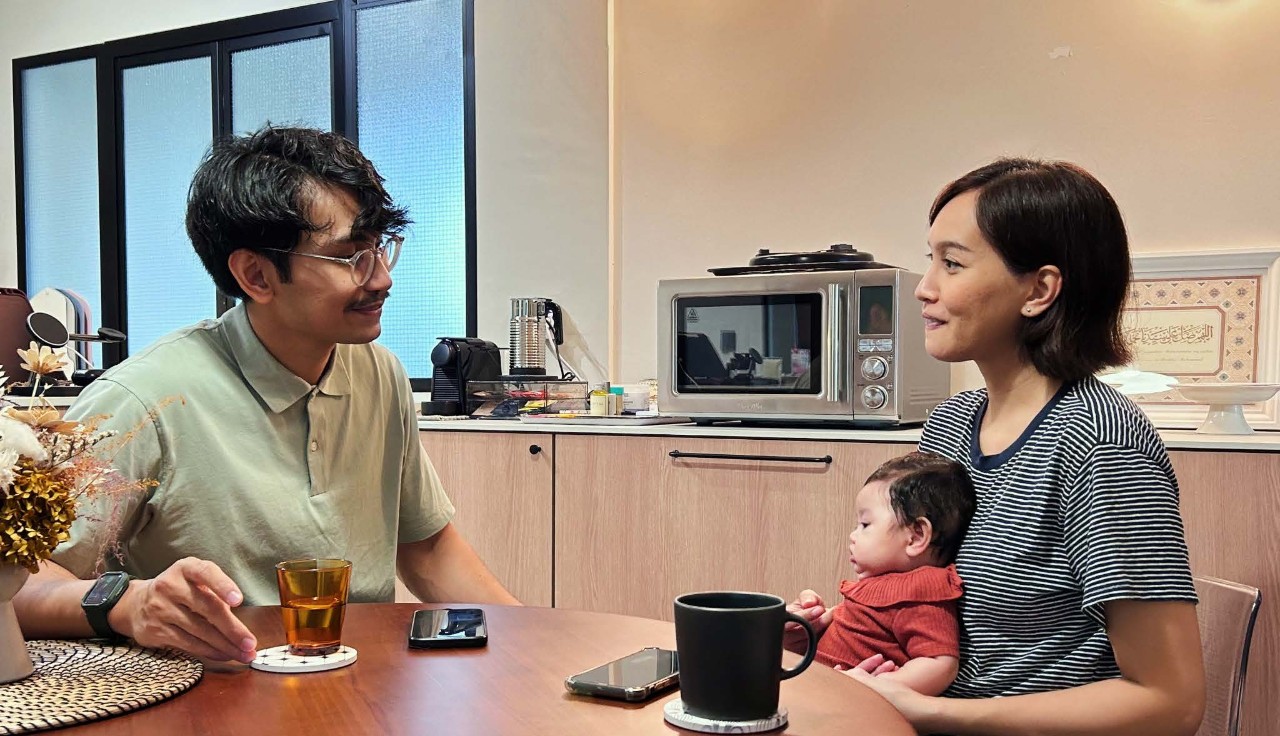
Hafiz: My home ownership experience was a little complicated. Before purchasing this house, I was living in a house that was originally owned by my elder brother and mom. But after my brother moved out, I became the co-owner in his place – I also started using my CPF to finance the house after my mom stopped working.
So, I was pretty worried about purchasing my own house with Atiqah, since my OA was pretty depleted, and I can’t own two HDB flats at one time. Fortunately, everything worked out. Before I got our SBF, my mom secured a 2-room flexi BTO flat, and we are now in the process of selling our old home – so I’ll eventually get my CPF funds back.
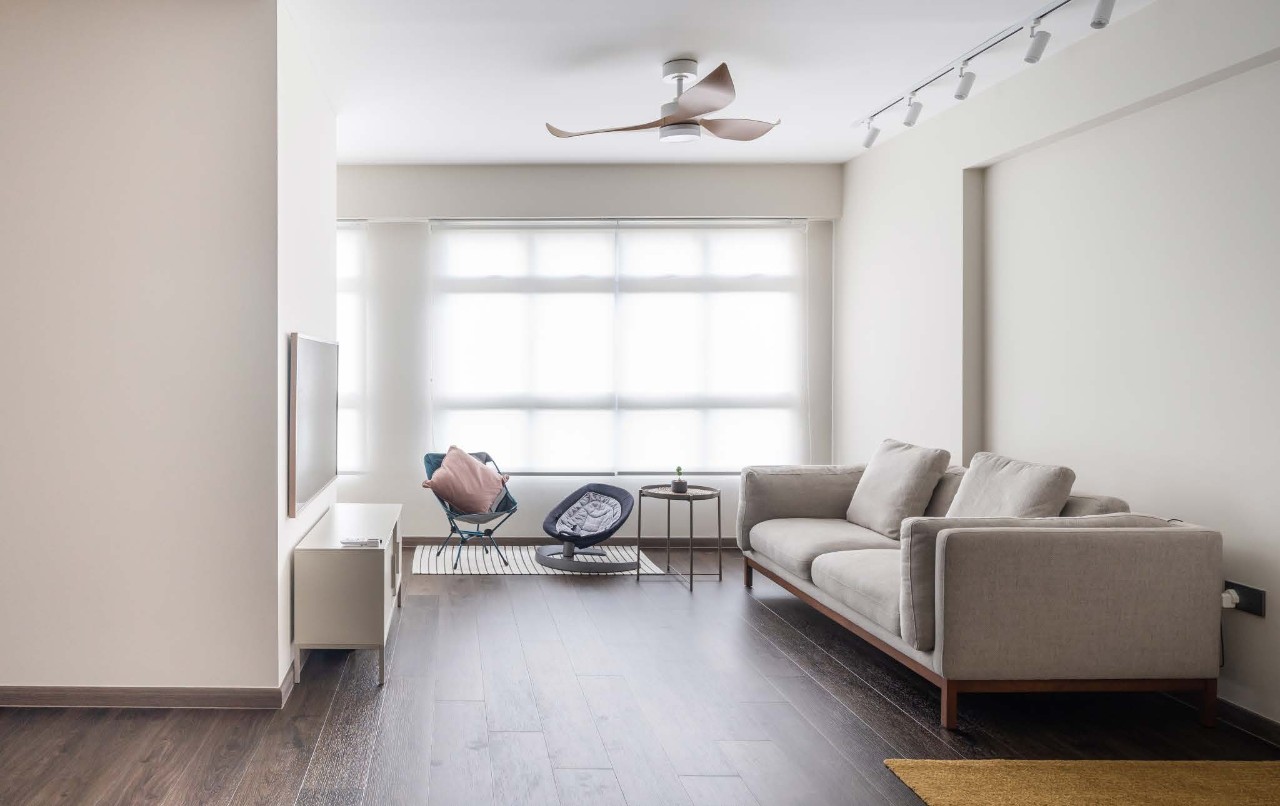
Finance-wise, Atiqah has been working full-time for over 8 years, so she had sufficient OA savings to fully finance our SBF flat.
Once my old house is sold – and my CPF savings are refunded back into my OA – I plan to ‘repay’ Atiqah with half the CPF funds she used for our SBF. To do this, there are a few requirements I need to meet, as I intend to transfer these funds into her Special Account (SA) to ensure that she has enough for her retirement.
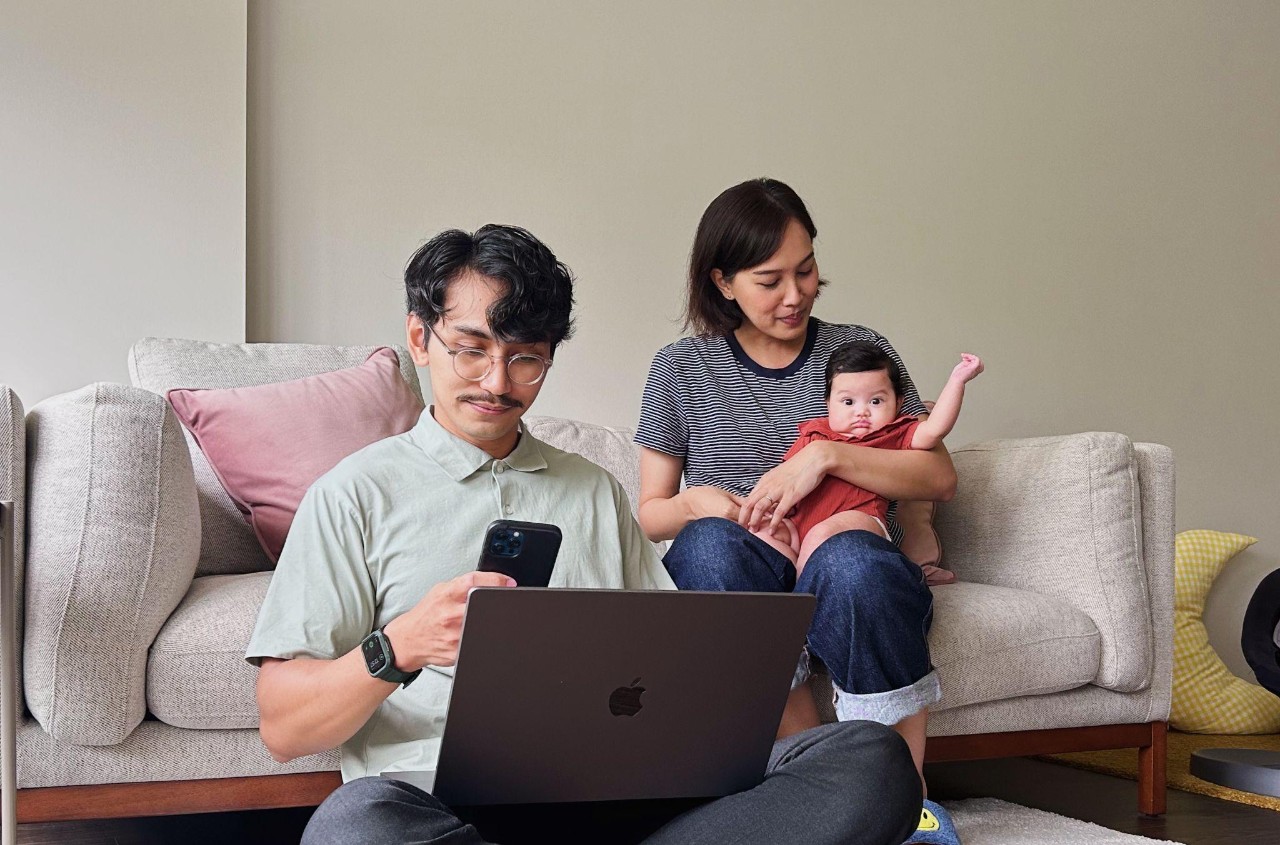
For our renovation, we took a personal loan since our CPF funds don’t cover renovations.
We cut down on costs by removing what we don’t need – for instance, we kept the walls bare and avoided using carpentry as much as possible.
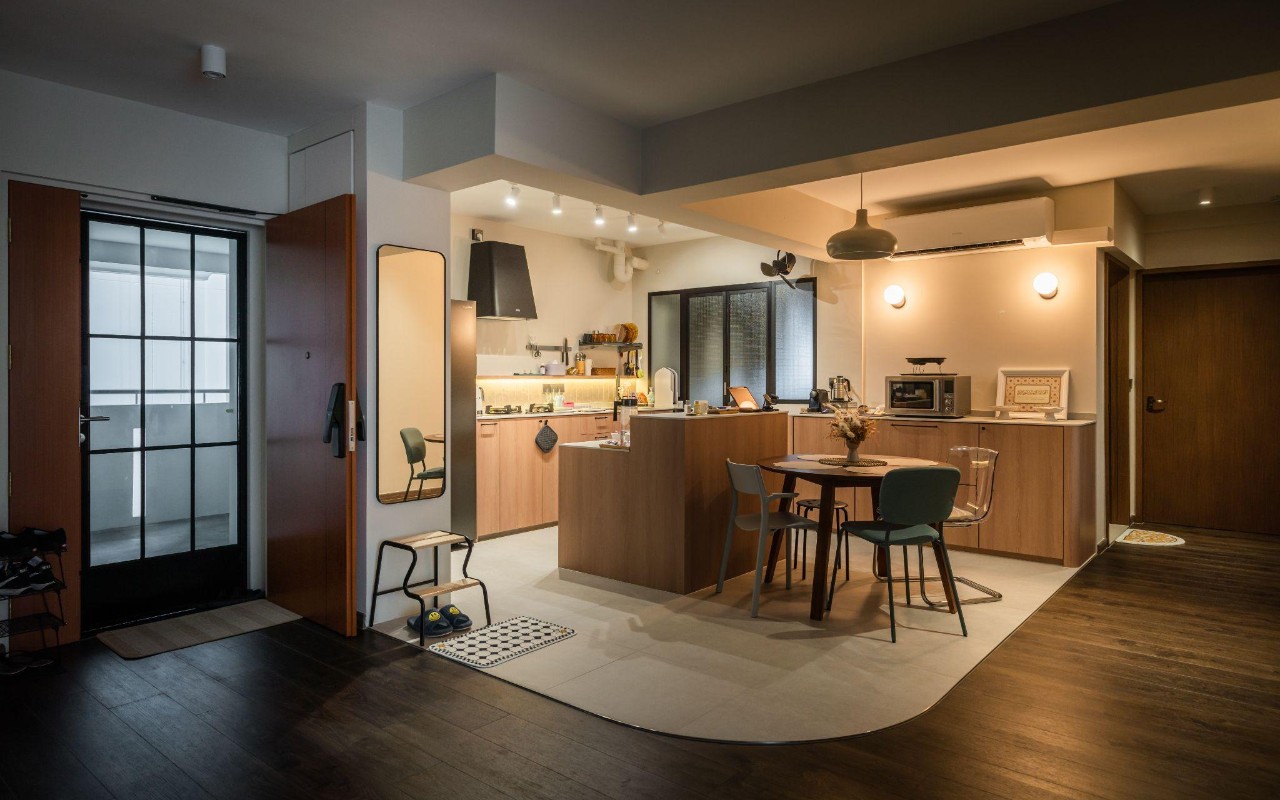
But at the same time, we still wanted a place that makes us happy. As we host friends often, one thing we really wanted was a kitchen island – which was a little expensive, but to us, was worth the extra cost.
Things they learnt, and advice for future first-time homeowners:
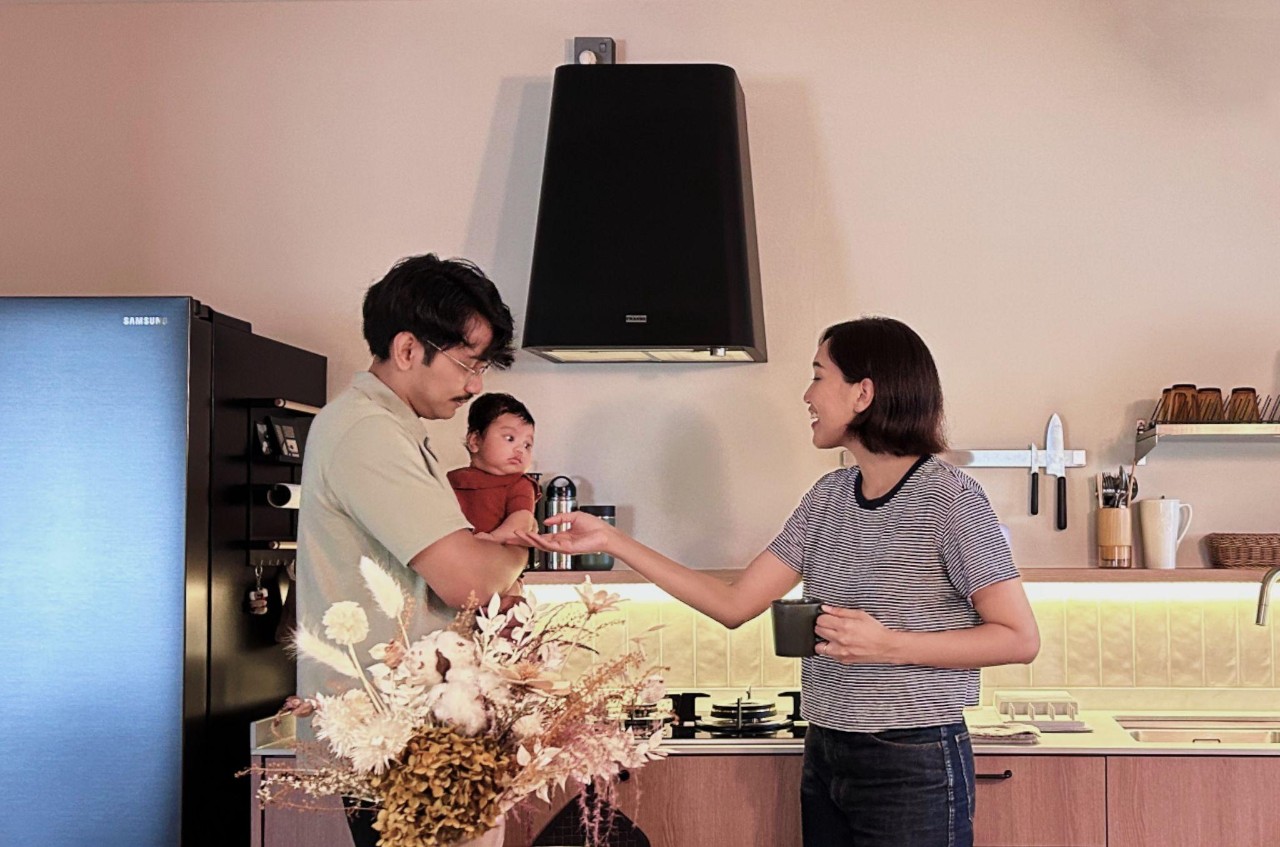
With everything happening at once, it was easy to get swamped, but I think what helped was our step-by-step approach. While it’s important to have an end goal in mind, focusing on one thing at a time prevents yourself from getting overwhelmed.
For example, we only thought about our renovation after figuring out how we were going to finance our house purchase. Then, once the renovation budget was settled, we went on to think about the furnishings, and so on. But while we’re doing all this, we also kept our overall budget in mind – if we overspent on something, we’ll cut back on another.
Also, don’t rush to buy everything. I know getting your first house is exciting, and that it’s tempting to fully furnish it at one go – we’ve seen our friends and family doing that, and it only made them spend more than intended. It’s best to take your time and enjoy the process!
Joyce (38), first time homeowner of a resale flat in Punggol
About herself and her home:
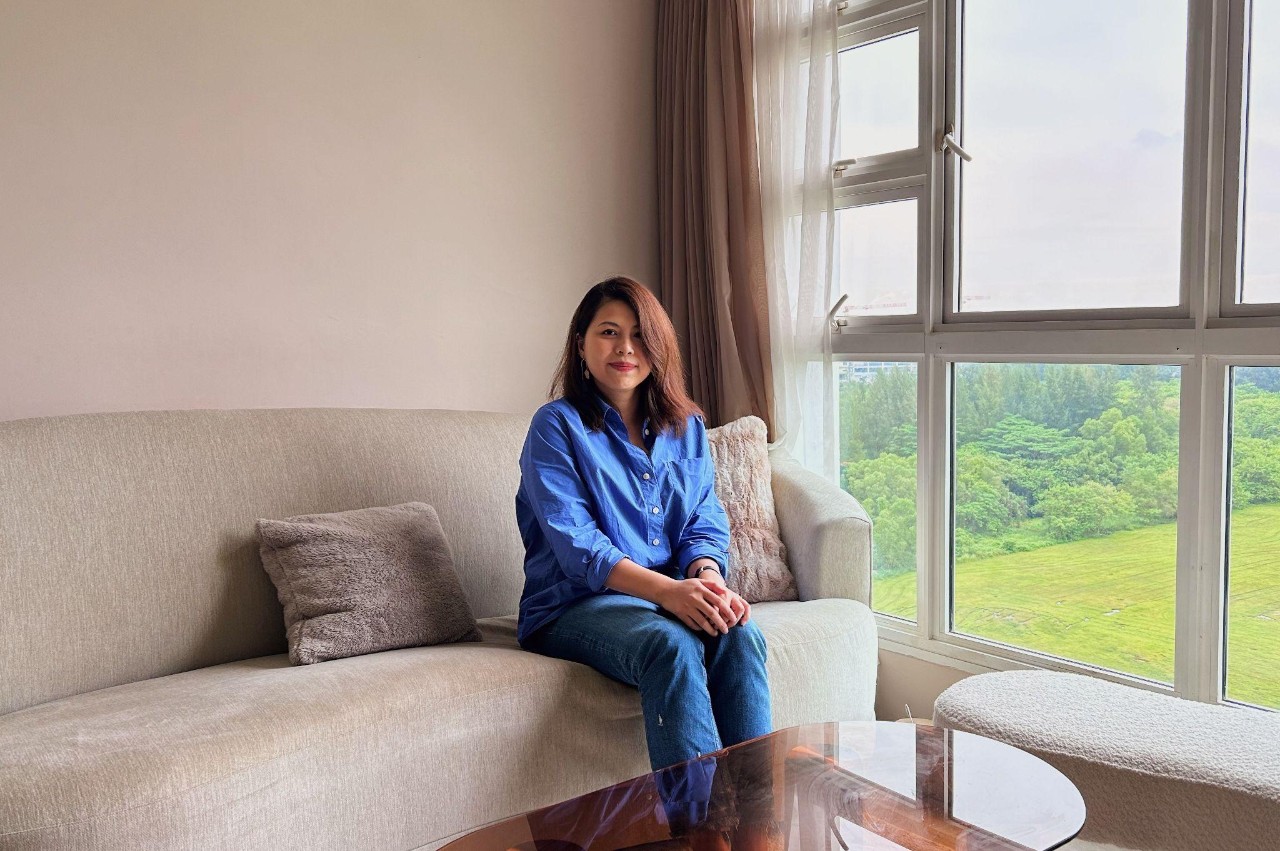
I think I’ve always been quite independent. I’ve studied abroad before, and I really enjoyed having my own space. It’s always been my plan to have my own home – it was just a matter of finding the right time and place.
When the pandemic began, I was still staying with my family, where I shared a room with my sister. But I guess with everyone working at home, it started feeling a bit too crowded for my liking (laughs) – so that’s when I decided to take the leap and purchase a house of my own.
So, here I am! I’ve been living in this house for about 1.5 years, and I honestly can’t be any happier with it.
House purchase and renovation – considerations, options, and decisions:
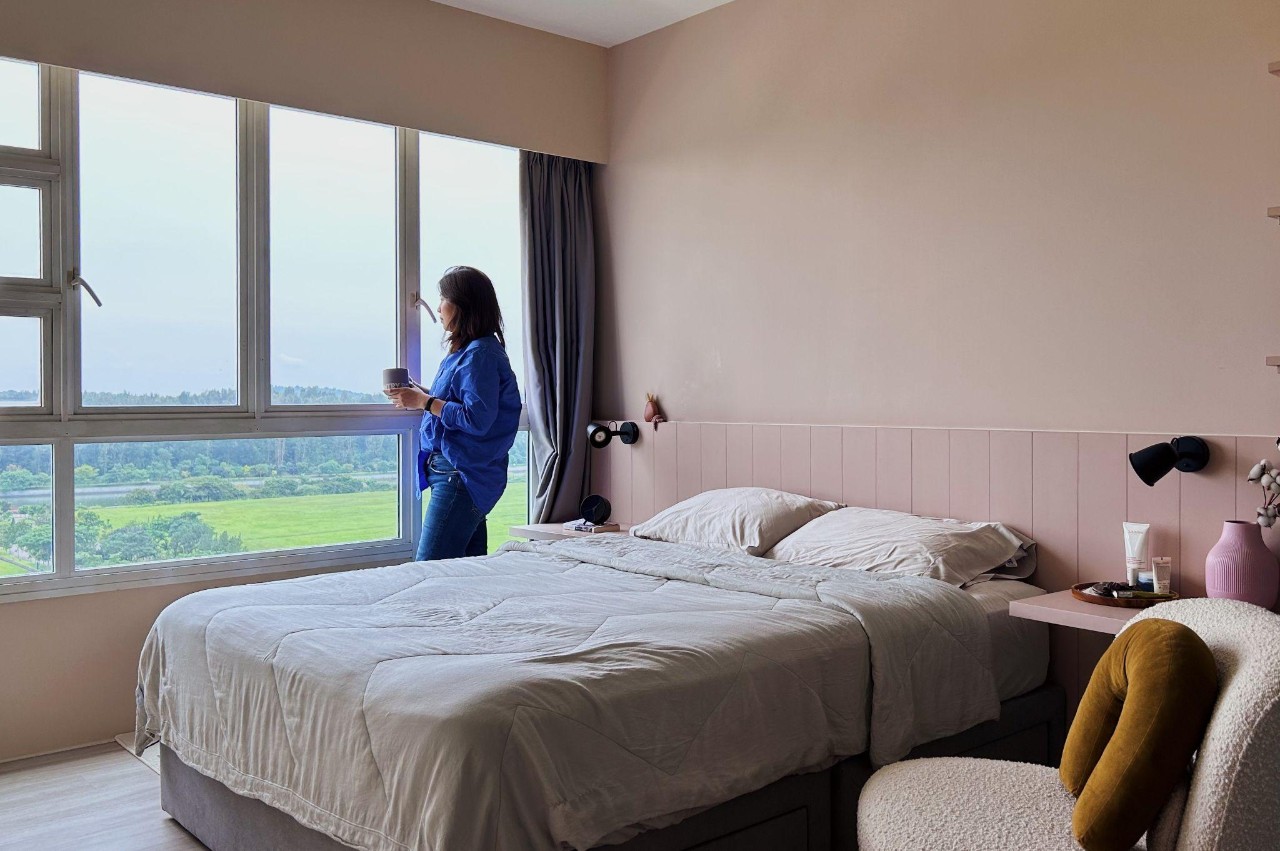
While finding a bigger HDB flat in the Central area was tempting, it would have definitely burnt through my savings – so I decided to remain close to my parents, and bought this 3-room resale flat in Punggol. It’s not only more affordable, but I am also eligible for the Proximity Housing Grant, which alleviated the overall cost of my house purchase.
When it came to financing the house purchase, I had two options: the funds in my OA, or a bank loan that I’ll repay with cash. It was a tough choice – but after some consideration, I decided that getting a bank loan was a better option for me.
The main reason for this was that I wanted to save whatever I had in my OA for my retirement, and I wasn’t confident that my personal investments would bring in the same returns I was getting in my CPF account, which provided me with an interest rate of up to 3.5% per annum.
Finances were also a huge consideration for my renovation. As a single, I don’t have the luxury of splitting the expenses with someone else, so I saved where I could – like choosing to overlay the old flooring instead of hacking.
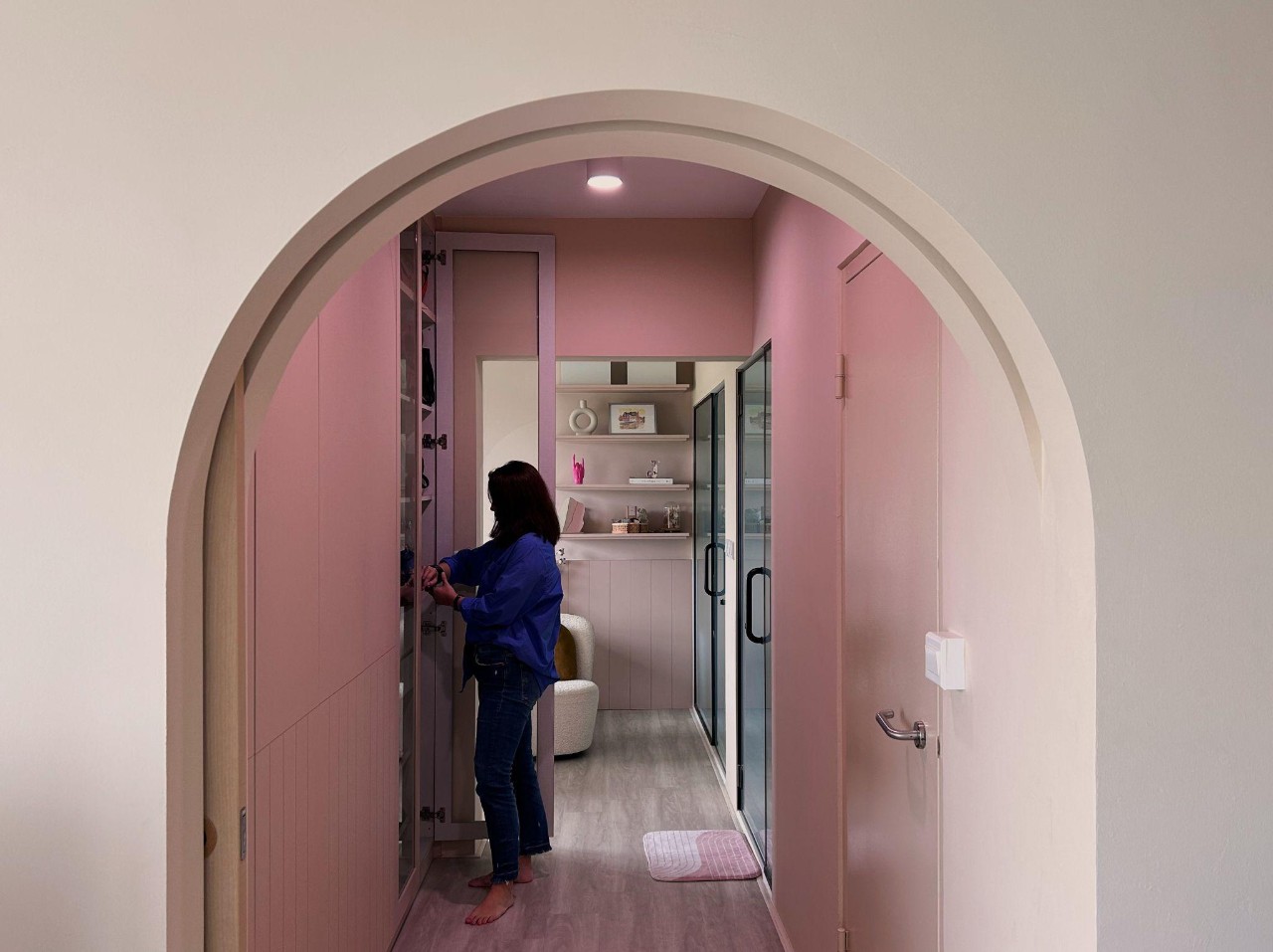
As I have been working for over 15 years, I’ve accumulated a fair amount of cash savings over the years. From this amount, I took out 20% as a lump sum, which was used to finance the downpayment and renovation. Then, I used a bank loan to cover the rest of my housing expenses.
The reason why I left a large majority of my cash savings untouched was because I wanted to be extra careful with my finances. I had taken a 20% pay cut at the time, and in case of any emergencies, I wanted to ensure that I had a comfortable safety net to fall back on.
Things she learnt, and advice for future first-time homeowners:

Before making any big decisions, it’s good to take some time to understand what you need. Just because someone did it a certain way doesn’t mean it’s the best way for you, because your needs may be very different.
If you’re considering a bank loan, I’d advise you to look at things such as your risk profile and market conditions to see what you’re comfortable with. While I was fortunate enough to secure a bank loan with low interest rates at the time, market conditions are much more volatile now.
But whatever the situation may be, it’s important to set aside a buffer for every single thing. There’ll be many hidden costs that you may not be aware of until you have to pay for them – like stamp duties, property taxes and conservancy fees, all of which will add up to your total cost.
Yock Siong (34) and Christina (34), second-time homeowners of a resale flat in Serangoon
About themselves and their home:
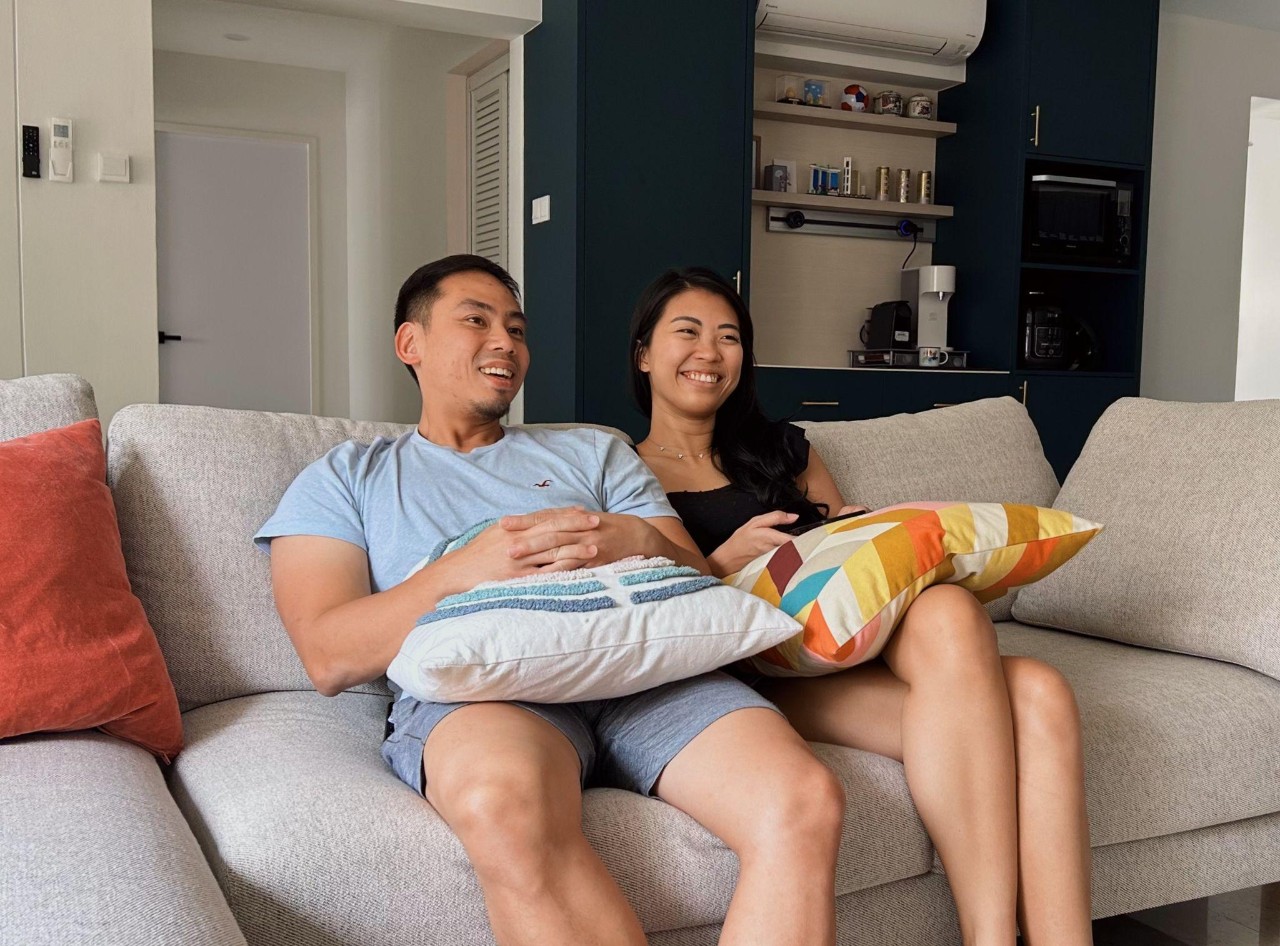
Yock Siong (left) and Christina (right)
Yock Siong: Previously, we were staying in a 4-room BTO flat in Sengkang. After our two kids came along, we found ourselves needing a bigger space, so we decided to look for a new home.
As we wanted to shift closer to my mum in Serangoon, we mainly looked for houses in Hougang and Serangoon. We eventually found this older 5-room flat in Serangoon early last year, and we officially moved in around July once the renovation was completed.
Financing their house purchase and renovation:
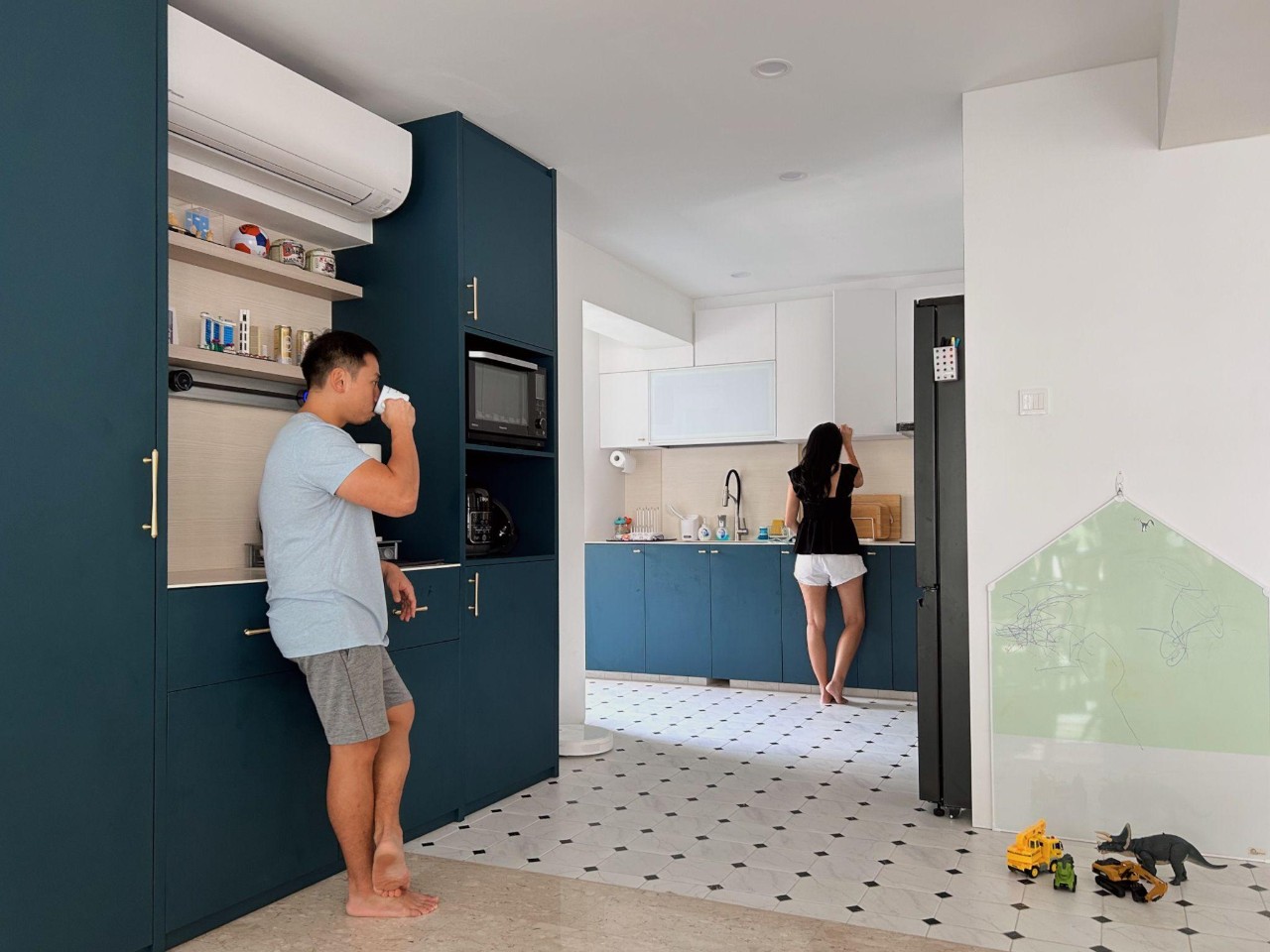
Financing our house was pretty straightforward. As we have been working for over 10 years, we’ve accumulated a sizable amount of funds in our OAs through our monthly salaries, so we used that to partially finance the house purchase. Then, we used a bank loan to finance the rest.
However, as our OAs were also meant for retirement, we weren’t too comfortable wiping them out. So, we left a portion of it untouched. Even now, we’re making voluntary top-ups to ensure we have enough for the future.
Also, we wanted to make full use of the CPF interest rates, since we personally found them more attractive than the banks’ fixed deposit rates, as [our voluntary top-ups] aren’t huge, but with the compound interest, this amount will become more substantial in the future.
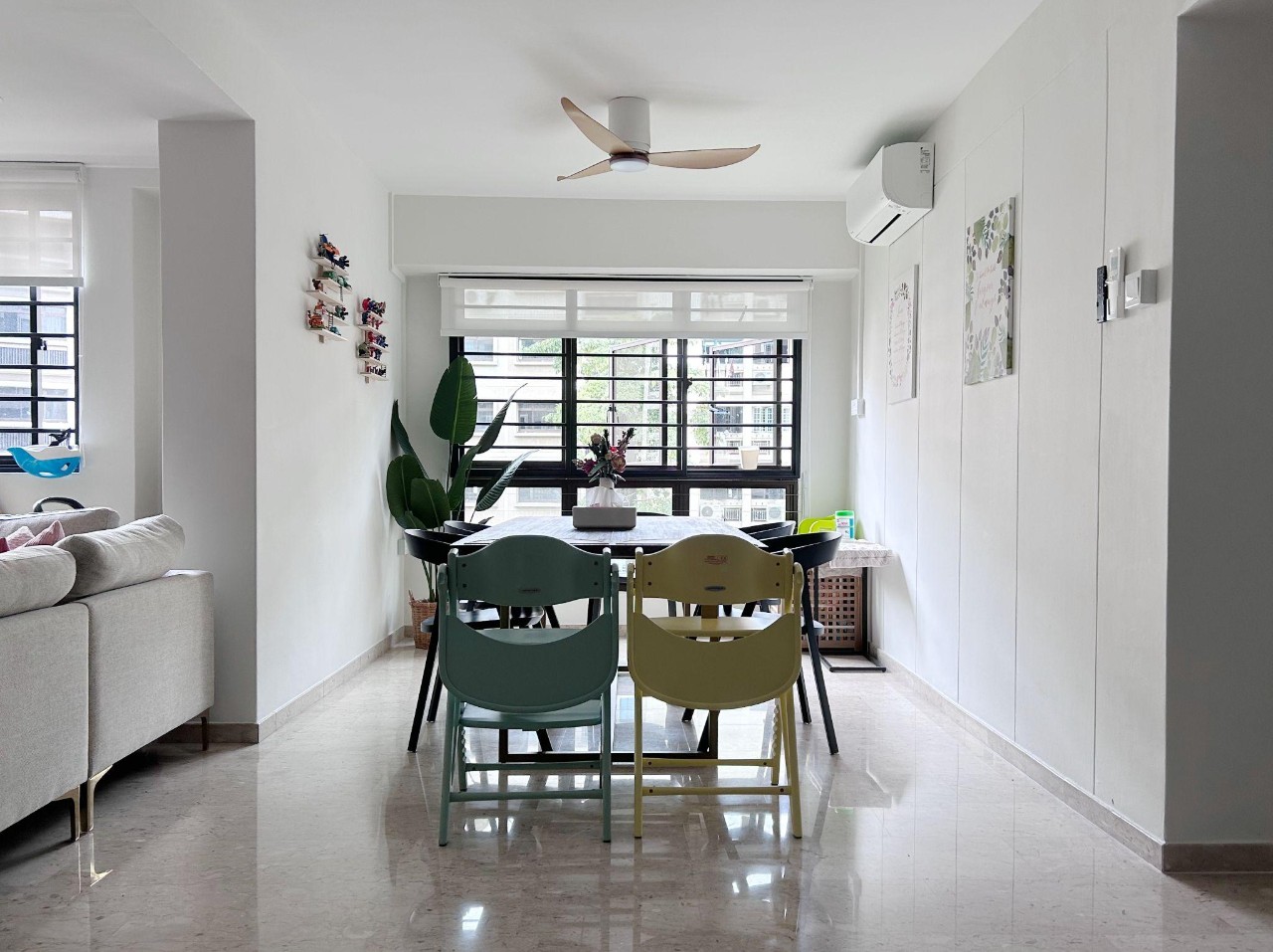
For our previous home, we had a tighter renovation budget as we were still at the early stages of our careers. It’s why we engaged a contractor directly – but then, the renovation became very time-consuming as we had to oversee everything ourselves.
This time, we didn’t want that hassle, since we’re both busy working and taking care of the kids. Also, we have more disposable income to invest into our home. It was a no-brainer for us to engage an interior designer (ID) to work on our home this time around.
Also, compared to a regular contractor, an ID can help us plan the space properly. Our kids are at that age where they need a lot of space to play with their toys and run around, so we figured that an ID would be the better choice, since they have the know-how to better cater to [our kids’] needs.
Things they learnt, and advice for second-time homeowners:
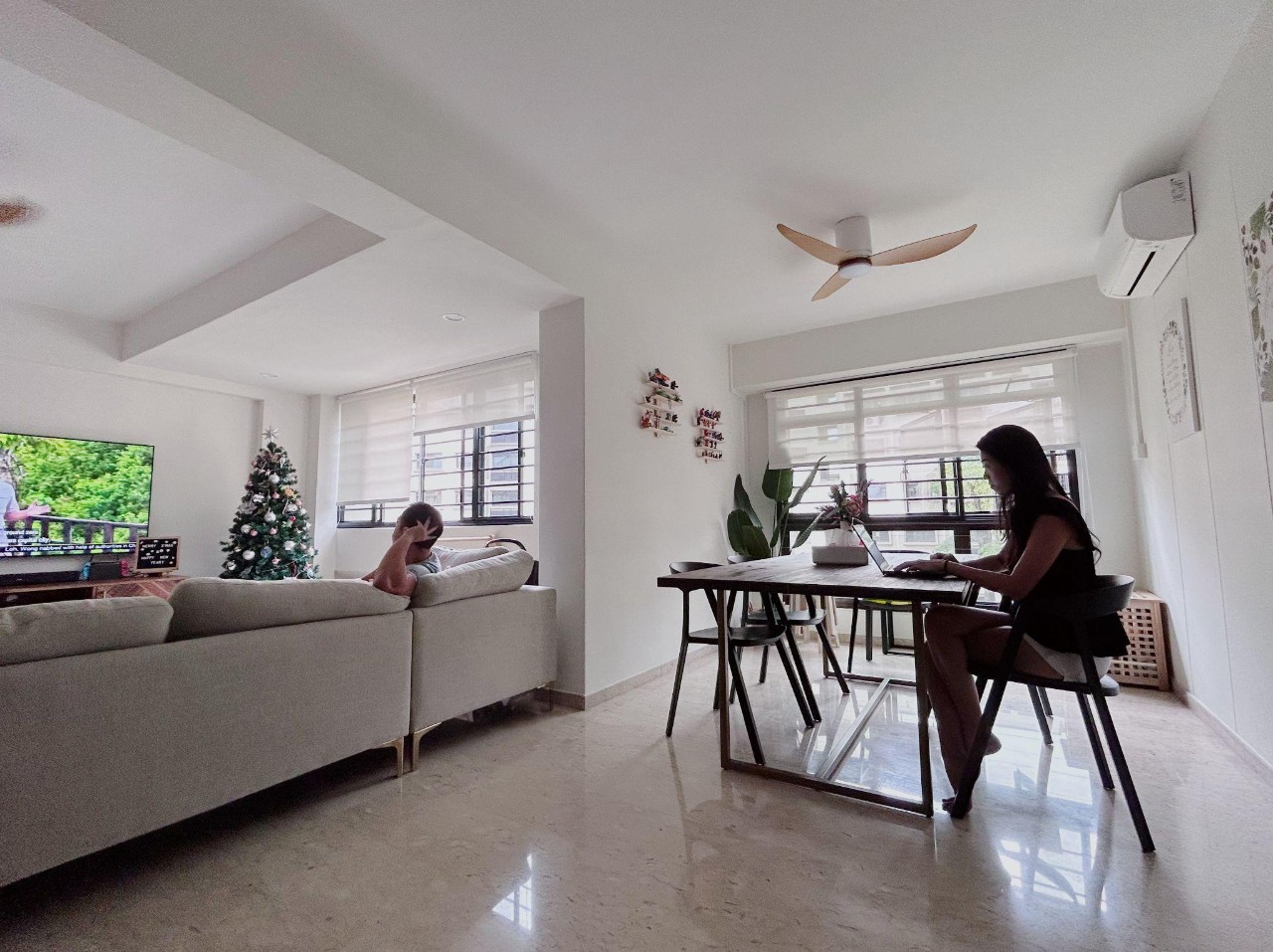
Be prepared to consider all the costs involved in buying and renovating a house! For us, we wanted to sell our BTO flat at a price that would allow us to cover the cost of our new house. However, we also needed enough buffer for our renovation and furnishings.
Thankfully, our sales profit was enough to cover everything – about 90% of it went into the renovation and furnishings. We then set aside the remaining 10% for our kids’ future needs.
Also, If you’re moving into an older flat, be prepared to spend more on the renovation. Personally, our goal wasn’t just to have the house in a good condition– but as parents of young children, we also needed to implement childproof features such as anti-slip flooring and minimising sharp edges on furniture.
Such preventive measures would usually cost more than the average house renovations.
The key takeaway for homeowners
We get it – budgeting for a house purchase and renovation can be daunting. But as these three homeowners have shown, it’s doable – even if you’re going on this journey as a single person, or as a couple looking for their first or second home.
Despite their different journeys, there’s a commonality you can take to heart: that there isn’t a one-size-fits-all strategy when it comes to home purchases and renovation. As shown, there are ways in which you can achieve your dream home while still actively preparing for your retirement – such as by being prudent in not just the use of your cash, but also your OA.
Some ways to do so include regular CPF top-ups, and allowing unused funds to sit and grow to a tidy sum with the power of compound interest. But these aren’t your only options to finance your home without compromising your retirement – for even more tips, click the link below!
This article was first published on Qanvast.
Information in this article is accurate as at the date of publication.



